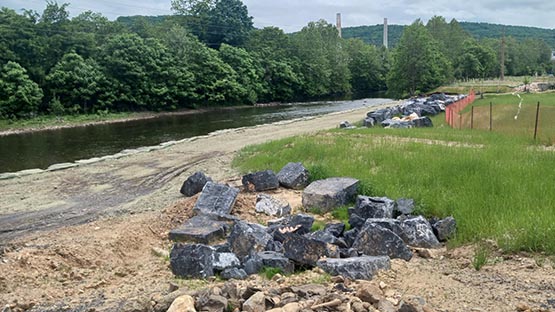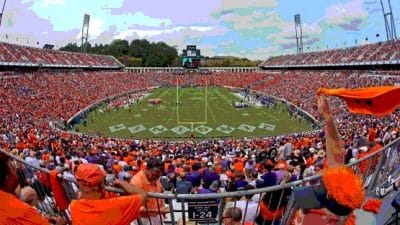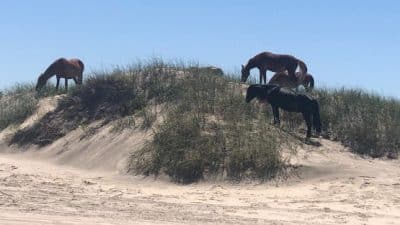Story by Chris Graham
[email protected]

“Having experienced it in other towns, whenever a shopping center comes to the town, it just draws the flow of traffic to that area. It was a natural when that started happening here – that we had to just jump in on it,” said Lemons, who moved Lemons’ Jewelry from its Downtown Waynesboro home of more than a quarter century to a strip shopping center adjacent to the Wal-Mart Supercenter on Lucy Lane in 2005.
“It was a pretty straightforward procedure. We jumped at the opportunity to move out here,” said Lemons, who said business “just took off” in the first few months after the move was finalized.
It was this move and its success that got me thinking about examining the relationship between the thriving West End and the struggling downtown more in depth. Lemons’ Jewelry seems to me to be the kind of store that would be a perfect fit in the Downtown of the 21st Century – a niche, destination-type retail outlet that could have good synergy with a framing shop down the street and a music store down on the corner and a high-end gift shop across the way.
The notion that I can’t get out of my head is that if somebody like Phil Lemons, who had been in downtown for more than 25 years, is perfectly willing to pull up stakes and move to a West End strip shopping center, then maybe this downtown-revitalization stuff that I’ve been writing about – hell, investing in, since Augusta Free Press Publishing, the parent company of The New Dominon magazine, just moved into a 2,800-square-foot mixed-used residential office at the top of the hill on West Main Street leading into the core of the downtown district – might be a lot more in the way of trouble than it is actually worth.
Kimberly Watters, the executive director of Waynesboro Downtown Development Inc., did her best to disabuse me of that sinking feeling on my part.
“As you know, downtown is never going to be the big shopping-mall-type place that downtowns were in the ’50s and early ’60s. That’s just not what downtowns are anymore. There’s more of a sense of community,” Watters said.
She then pointed to the fact that I myself have moved to a residence in a downtown location as evidence of one trend in the works that will breathe new life into the downtown district in Waynesboro.
“Residential is huge in making downtowns vibrant. I saw that happen – it seems like it happened overnight – in Staunton. It was a huge impact when the upper-floor apartments, and particularly when the old Y was converted,” said Watters, who I must note here came to her job at WDDI after a several-year stint as the executive director of the Staunton Downtown Development Association.
“Downtowns now have to be mixed-use – that’s professionals, residential, amenities, arts, theater, dining,” Watters said.
If you’ve read my columns on Waynesboro, you probably know that I like to use the appellation River City to refer to Waynesboro from time to time. The moniker dates back to a former newspaper editor of mine who himself was unsuccessful in getting the nickname to catch on in his time here – but as WDDI has made efforts dating back to its inception at the turn of the decade to sell the river as a downtown asset, it has begun to take on a life.
To Watters, the river as an asset is not just a sales pitch.
“I believe we need to capitalize on the river, and people are interested. It’s sort of evidenced by the Fly Fishing Festival now – it’s the biggest one in the state,” Watters said.
“Obviously we have issues with flooding, but that was what Riverfront Commons was,” Watters said, referencing a development concept developed by WDDI a few years ago that envisions a downtown linked to a South River Greenway and the Blue Ridge Parkway a couple of miles east of the city on U.S. 250 with bustling commercial, retail and cultural sectors and a healthy number of residential units included for good measure, “an attempt to address some of those issues via development that would use the river. And what a great thing it would be – to have dining along the river in a pavilion where you could hear live music and you could be sitting by the river.”
“I think it’s happening now a lot more quickly. There have been some faltering efforts the past few years, but I think things are going to start moving here within this upcoming year. It’s going to be very visible,” Watters said.
I’m still not over the Lemons’ move, though. I mean, maybe his was just a short-term-focused kind of thing – but the guy had been there forever, and then decided to hitch his wagon to the Wal-Mart horse and ride it wherever it would take him.
To get more to the heart of the matter, then, I went and asked two other long-timers – Don Morris at Valley Framing Studio and Gallery, who has been in downtown for 20 years, and Tim Spears at Tim Spears Music City, who has been in business in Waynesboro for 23 – if they’d ever been tempted to follow Lemons to the Yellow Brick Road of the West End.
“Never on my part,” Morris said one Friday morning in the late fall before he switched the sign on the front door from Closed to Open. “We depend upon foot traffic. We depend our customers who make us a destination shop to come see us to carry us through. People who come see us at the present time – we’ve had parking issues before, but at the present time, we have parking available.
“The realities are,” he continued, “the costs of retail space out there are so much more than it is downtown. That’s a factor.”
As is the fact that Morris owns the building that houses Valley Framing – just as Spears owns the building that is home to Music City.
“Of course, when I’m in here, and I’ve got four feet of water, I’m not saying I don’t consider it then,” Spears said of the idea of moving to the West End. “But as far as the customer base, in 23 years of business now, we have people coming to us from Culpeper, Charlottesville, Lynchburg, Danville, Richmond. I’m not saying that I might not pick up a few extra customers if I went on the West End. But it’s doing well here. Music City is alive and well.”
Spears next said that he does hear from time to time from people who relate sometimes somewhat flippantly that Downtown Waynesboro is dying or that downtowns in general across the country are dying. From a personal standpoint, Spears said, “that really doesn’t matter much to me, because I’ve always been the kind of guy that I thought if you had the price, the product and the service, they would come.”
“But if you go with what they’re saying, that downtowns are dying, you’ve got to liken it kind of to when horse-and-buggy was our primary means of transportation, and then the automobile came along. Well, that doesn’t mean that you kill the horse,” Spears said. “You know, you still take care of the horse, and you still monitor the horse, and the horse is still a big part of the society. But it’s not your main method of transportation anymore. And certainly shopping malls and strip malls and shopping centers and so forth have changed the way that people shop downtown, but in my way of thinking, downtowns across the nation, including ours, are not dead.
“I’ll go back to the price, product and service bit again. Put yourself in the shoppers’ shoes. If you have a store where you like to buy fine leather coats, or maybe a hat store, if you’re a hat person, and it might be in a little cubbyhole out of the way out of town. But if they have the price, product and the service, and you like their product, that’s where you’re going to get it. It doesn’t matter if they’re on Route 340 or 250. They will be there,” Spears said.
Which gets us back to where I was before regarding how the move of Lemons’ Jewelry seemed to be a sign to me that downtown revitalization was maybe more trouble than it was worth. Inherent in that idea is that what happens in a city economy is akin to what we used to call in the Cold War days a zero-sum game – basically when something positive happens on one side of a particular equation, then necessarily something negative has to happen on the other.
City economic-development director Meghan Williamson knows her Cold War history, but she’s not so much into its applicability to the downtown-West End situation here in Waynesboro.
“When you ask the question, Is the Exit 94 and West End development competing with downtown or hurting downtown in some way, it assumes an inherent conflict which I think can’t exist if downtown is going to be successful,” Williamson said. “Look at Charlottesville or Staunton or any other successful and thriving downtown. Charlottesville is a great example, where they have lots of retail development along 29 North, which is actually what is competing with our West End development, not our downtown. You look at their downtown, and it doesn’t compete with 29. It’s entirely its own entity – from a cultural, from a restaurant and from an experience and an environment standpoint. You don’t go to the Mall in Downtown Charlottesville to buy something that you need from Wal-Mart – you go for the atmosphere and the experience.”
City manager Doug Walker is another who does not subscribe to my Cold War way of thinking.
“Waynesboro is not that different than many other small cities that have seen the retail sector migrate out to where the majority of the people live. That’s just followed fairly traditional development patterns where the people move out to the suburbs, and then the businesses move out to the suburbs in order to be where the people are. And downtowns, not surprisingly, have seen some loss of retail as a consequence,” Walker said.
“What’s happening in Waynesboro is perhaps 10, 20, even 30 years later than this phenomenon and pattern of development that has happened in many, many other cities. And as we have learned, we think, some lessons from other cities who have experienced it, although there is a short-term issue in terms of just the loss in investment in downtown, there’s a long-term opportunity that we think is much more valuable on the positive side than detrimental on the negative side, having gone through this transition,” Walker said.
“You talk to people who remember Waynesboro from the 1970s and the busy streets – I mean, I’ve heard it for five years, you’ve heard it for that or longer. I think the challenge that we have is trying to paint a picture of our downtown that is as productive as that vision, but is different in terms of what we imagine the future of downtown will be,” Walker said.
I don’t disagree with anything that Walker or Williamson or any of the other downtown boosters have said here. Again as I mentioned above, I’m a downtown guy, too – these words were typed actually in the residential part of our new Augusta Free Press Publishing headquarters at the top of the hill overlooking downtown, sitting in the living room listening to jazz music playing softly in the background and looking out a window open to the possibilities of what can be and I hope one day will be.
But that said …
I’m still not over what Phil Lemons being out on the West End could mean for the future of Downtown Waynesboro.
Chris Graham is the executive editor of The Augusta Free Press and The New Dominion.










